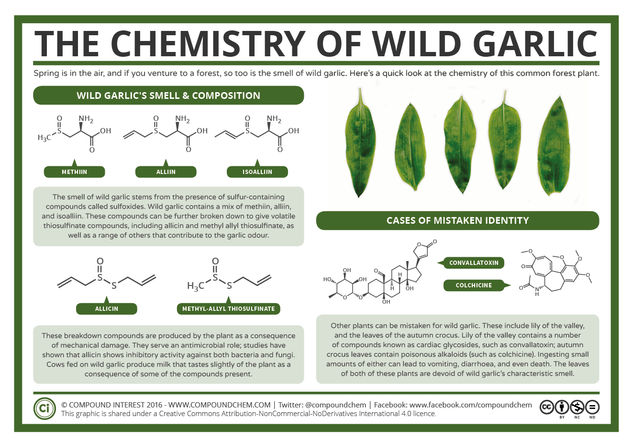© Compound InterestThe Chemistry of Wild Garlic
Spring is in the air, and it’s likely that, in your local forest, so too is the distinctive scent of wild garlic. Also known as ‘ramsons’ or ‘bear’s garlic’, green carpets of wild garlic swell in the forest’s undergrowth at this time of year. Here we take a look at their chemistry, and why, if you’re out foraging for it, you want to be sure you know how to identify it!
Wild garlic, as the name suggests, is also a member of the Allium family that includes common garlic, onions, and chives. Unlike the garlic more commonly used in the kitchen, wild garlic’s leaves are more commonly eaten than the much smaller bulbs. It’s hard to fail to notice the areas in which it grows, due to the strong smell of garlic they send wafting on the air – a smell that, unsurprisingly, has a lot in common with ordinary garlic on a chemical level.







